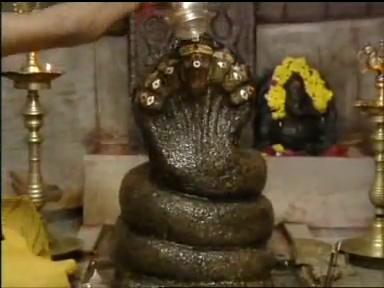Simhasana (lion pose) | |||||||||||||
| |||||||||||||
| Simha - Lion In Simhasana, the face of the practitioner resembles that of a lion, hence the name. | |||||||||||||
Taking the asana positionInitial Position - Sitting position
| |||||||||||||
The asana positionIn this asana, the entire weight of the upper body should be shifted onto the knees via the arms. All facial muscles should be stretched, with the tongue hanging as far out as possible. | |||||||||||||
Releasing the asana position
| |||||||||||||
Anatomical focus | |||||||||||||
AwarenessOn the slight pressure in the eyes and stretch in the facial muscles. | |||||||||||||
Do's
| |||||||||||||
Dont's
| |||||||||||||
Benefits
| |||||||||||||
Therapeutic application | |||||||||||||
Precautions & contra-indications
| |||||||||||||
DurationThis asana should be practiced for at least 30 seconds to gain the benefits and after some time can be extended up to 3 minutes. | |||||||||||||
Variations & tipsIf it is difficult to sit in the position described above, you can simply sit in vajrasana with the knees wide apart, and leaning your body weight onto the hands placed on the ground in front of you. | |||||||||||||
Preparatory posesVajrasana | |||||||||||||
Follow-up poses | |||||||||||||
Ancient textsHathapradeepika describes this asana in 3 shlokas. The first chapter describes this asana from shloka No. 50 to 52 :Gulphaou cha vrushansyadhah sivanyah parshvayoh kshipet l Dakshine savyagulpham tu dakshagulpham tu savyake ll H P 1.50 Hastou tu janvoh sansthapya swangulih samprasarya cha l Vyatvaktro nirikshet nasagram tu samahitah ll H P 1.51 Meaning - The right heel is to be kept on the perineum and then the left heel is to be kept below the thigh. Both palms should be kept on the knees and the fingers should be widely spread. The mouth should be opened as wide as possible and the gaze fixed on the tip of the nose. This is known as Simhasan. This is considered by yogis to be an important asana. The third shloka describes the pre-position. Hathapradeepika advises that the gaze is to be fixed on the tip of the nose, however, the founder of Kaiwalyadham, Swami Kuvalyananda advises that it is important to fix the gaze in between the eyebrows. | |||||||||||||
గురువారం, సెప్టెంబర్ 22, 2011
SIMHASANA
దీనికి సబ్స్క్రయిబ్ చేయి:
కామెంట్లను పోస్ట్ చేయి (Atom)



కామెంట్లు లేవు:
కామెంట్ను పోస్ట్ చేయండి